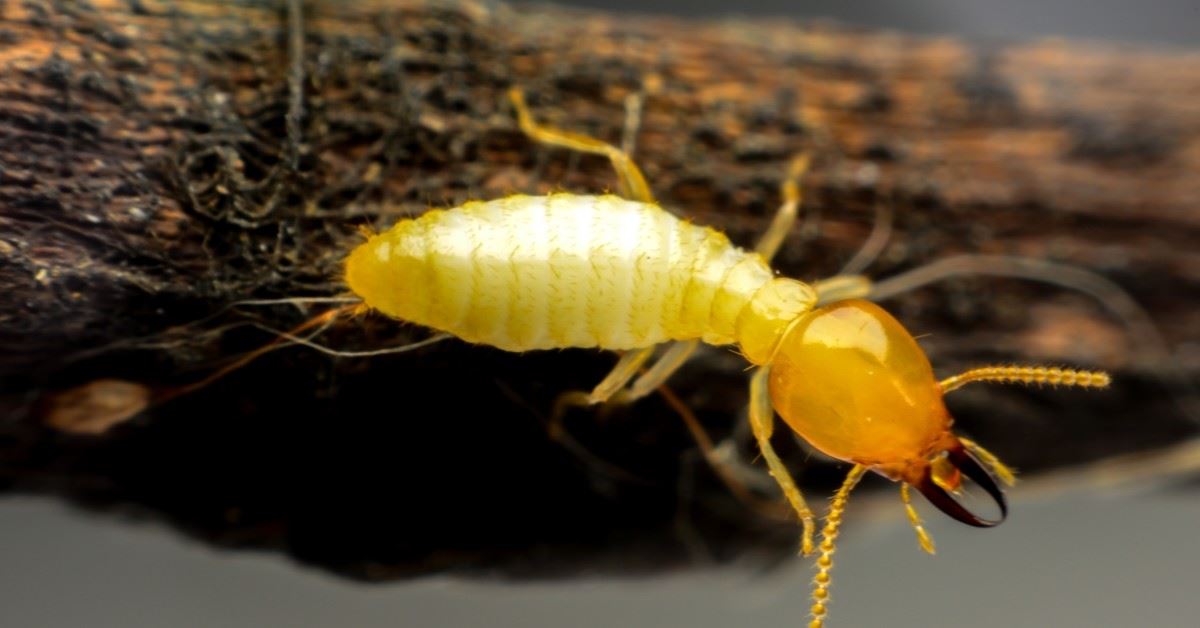There are billions of insects alive on this planet today. These creatures are adept at surviving and multiplying. Being so small, we often don’t notice them — that is until they invade our home, office, or business.
Arizona Termite Specialists help homeowners and business owners in the Scottsdale area rid their property and building of termites, an insect that is not exactly pretty to look at like butterflies. Termites are social insects that live in colonies (meaning, if you see one termite, you know that thousands of their relatives are lurking somewhere nearby). Termites feed on dead plant material and cellulose, which is found in abundance in wood, leaves, soil, and animal dung. And being that buildings are made up of wood, termites can infest your home or office. Below, we’ll take a look at the life cycle of a termite, and if you suspect you have a termite infestation, call us today!
THE LIFE CYCLE OF A TERMITE
The members of a termite colony include: workers, soldiers, a primary queen, and kings. Workers are the majority of the colony and can be both male and female. Like their name implies, they perform most of the work around the colony, such as gathering food, feeding the colony, maintaining the nest, and caring for the young. Soldier termites are different from other termites in that they have quite large mandibles, which they use to fend off predators. They only live between one and two years. The queen termite, however, is the longest living insect on the planet. She can live to be 50 years old.
Mating
The life cycle of the termite begins with a mating flight. This is where males and females who can reproduce swarm and fly away from their current colony. At this time, they mate. They then shed their wings and begin to establish new colonies. The king and queen head the colony and are the only ones involved in reproduction.
Egg
The queen termite will begin to lay eggs. Termites go through what is known as incomplete metamorphosis, which is where they skip the pupa stage. Thus, they only have three phases: the egg, nymph, or larvae, and adult stage.
Larvae
Termites when they hatch are pale and white in color. They grow by molting, which is where they shed their hard exterior, known as an exoskeleton. They will go through three or four molts (depending on termite species) on their way to becoming an adult. When nymphs molt, they turn into workers. Further molts may determine if they are a soldier. Some nymph become soldiers; some don’t.
This process of a larvae turning into an adult can take months, depending on the health of the colony and the abundance of food. All larvae have to be fed by workers who are tasked with running the colony, including caring for the queen. Pheromones regulate the colony, which keeps the female workers from becoming fertile. Only a select few will become fertile who will then leave to start their own colonies. Scientists have determined that queen termites have lower levels of oxidative stress, which could help explain their longevity.
Adults
Larvae will either become workers, soldiers, or reproductive termites, also known as alates.
CALL ARIZONA TERMITE SPECIALISTS TODAY FOR YOUR NEXT TERMITE EXTERMINATION
Insects, in general, are one of the most successful species on this planet, having survived for millenium virtually unchanged. Termites are one of these species, and once established, they can be cumbersome to get rid of.
Arizona Termite Specialists is your go-to termite company in Arizona. We only exterminate termites, preferring to specialize rather than deal with other pests. This allows us to provide you with better customer service as we often see things other exterminator companies miss. We have over 20 years in the termite extermination business, having inspected over 10,000 homes and helped thousands of homeowners and business owners rid their building of termites for good.
As resilient little creatures, termites require aggressive treatments, which is why we exclusively use Termidor®. Termidor is a substance that is applied to the soil on the outside of your home. Termites do not realize it is there, so they eat it; however, they don’t die right away. Instead, they carry Termidor to the colony, where it infects the rest of the termites, including the queen. This highly-effective treatment won’t disrupt your life like other termite treatments do. Plus, it’s long-lasting, offering your home or business protection for up to 10 years.
If you suspect a termite infestation and are in need of termite control services, call our termite company today. We serve many communities, including Apache Junction, Scottsdale, Phoenix, Gilbert, Mesa, Cave Creek, and more. We’ll stop by and offer a thorough inspection. We’ll answer all of your questions and discuss what a termite treatment looks like. Call to schedule today!
The post The Life Cycle of a Termite appeared first on Arizona Termite Specialists.


